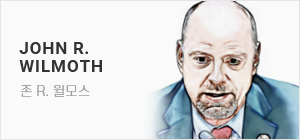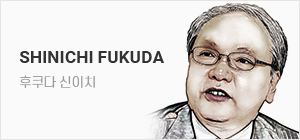| ||
| The Chinese Communist Party logo is seen on a skyscraper in Shanghai at dusk on Aug. 31. GREG BAKER/AFP VIA GETTY IMAGES |

In May last year, China inaugurated a new system of financial sector supervision, which had been announced two months earlier during the twin plenary sessions of the National People‘s Congress and Chinese People’s Political Consultative Conference. One year on, it is time to take stock. Sadly, all indications suggest that the supervisory overhaul will make it more difficult, rather than easier, for China to make progress in the direction of a market-based financial system that could efficiently allocate capital in its increasingly large and complex economy.
The reform has two main components. First, the former China Banking and Insurance Regulatory Commission, renamed National Financial Regulatory Administration (NFRA), got an expanded supervisory mandate covering the entire scope of financial firms in China except stock exchanges and securities firms that remain under the China Securities Regulatory Commission (CSRC). The NFRA‘s role includes financial customer protection and the supervision of financial holding companies, previously carried out by the People’s Bank of China (PBC), as well as investor protection duties transferred from the CSRC. As a partial offset, the CSRC received bond market oversight responsibilities previously held by the National Development and Reform Commission in a belated legacy of the days of top-down “credit planning” before the market-oriented reforms of the 1980s and 1990s. Correlatively, the NFRA took over the bulk of the supervisory capacity previously under the PBC, namely more than 1,600 county-level branches according to a Financial Times report. As China‘s central bank, the PBC retains responsibility for macroprudential oversight, but it has essentially lost its once all-encompassing role as financial supervisor, a process that had started in 1992 when the CSRC was spun off from the PBC.
Second, a new structure is overlaid above the NFRA in the form of the Central Financial Commission (CFC) which is given a general role of oversight of the financial sector, replacing a lighter Financial Stability and Development Committee that had been set up in 2017 but never quite found a role. Unlike the NFRA, which like the CSRC and PBC formally reports to China‘s State Council, the CFC is a body of the Chinese Communist Party. It is also a substantial central agency, not just a small coordination office, with significant specialized personnel and a permanent office close to those of the NFRA, CSRC and PBC in Beijing’s “Financial Street” neighborhood. Veteran officials with experience of state-owned bank management have been appointed to head the two bodies, namely Li Yunze for the NFRA and Wang Jiang for the CFC, the latter formally as deputy to He Lifeng, China‘s economic affairs Vice Premier who doubles as Director of the CFC’s Office. Meanwhile Wu Qing, another politically savvy official with financial experience, was appointed in February as the new head of the CSRC.
 |
| Chart title: China has become by far the world's largest banking jurisdiction [Source: The Banker annual Top 1000 rankings, author's calculations. N.B. The Banker's dataset covers the overwhelming majority of global banking assets. ] |
| ||
| People’s Liberation Army soldiers stand in front of the People’s Bank of China in Beijing. [AFP] |
As so often in China, the authorities gave no clear explanation of their motivations underpinning these major changes. There were no discussion papers, no public hearings, no observable debates. In fact, the semblance of policy deliberation that had accompanied previous changes in that space was not only abandoned, but even ironically inverted. Previous major changes in the financial sector policy framework had been preceded by a “national financial work conference” that set the stage for forthcoming reforms and were at least a performative expression of deliberative process. These conferences had regularly occurred every five years since the first one in 1997, which paved the ground for China‘s first major state-directed financial sector restructuring. On that established basis, a financial work conference should have been held in 2022, but the year came and went with no announcement. Instead, the new supervisory structure was publicized seemingly out of the blue in March 2023, and the new bodies promptly inaugurated in May. Only in November 2023 was a “central financial work conference” held in Beijing ― ostensibly a formality, with the adjective “central” replacing “national” as a clear indication of the shift from state to party emphasis.
At the time of the initial announcement last year, some analysts attempted to rationalize the reform by portraying it as what financial supervisory experts refer to as a “twin peaks” architecture. The twin-peaks concept was coined in the 1990s and adopted since then by countries including Australia, Belgium, the Netherlands, South Africa, and the United Kingdom (UK). As its name suggests, it entails a division of labor between two main financial regulatory authorities: one in charge of prudential supervision, working against systemic risk, and the other in charge of conduct-of-business supervision, defending market participants against abuses of information asymmetries and fraud and ensuring market integrity. In the UK, for example, the names of the two authorities directly reflect their respective mandates, namely the Prudential Regulation Authority (which is part of the Bank of England) and the Financial Conduct Authority. But the new Chinese architecture clearly does not conform to the Twin Peaks template. The NFRA cumulates both mandates, prudential and conduct-of-business, while the CSRC is left with a diminished scope of conduct supervision compared with its pre-reform status.
On the face of it, the new Chinese framework is functionally comparable to that adopted in Korea in the late 1990s, which entails a sector-wide Financial Services Commission making policy and the Financial Supervisory Service implementing it, echoing the respective roles of the CFC and NFRA. But the cost-benefit balance of an all-encompassing sector-wide supervisor is very different in a massive financial sector like China‘s, the world’s second-largest by most measures (or even first, e.g. by size of banking assets ― see chart), versus a medium-sized one like Korea‘s, where it makes more sense to centralize all policy mandates in a single institution. In that respect, the CFC/NFRA architecture rather resembles that adopted by the UK also in the late 1990s, with an all-powerful Financial Services Authority (FSA) supervising all financial firms and markets. Even though the UK financial sector at the time was considerably smaller than China’s now, this setup turned out to be too unwieldy and ended in disastrous failure with the great financial crisis of 2007-2009, after which the UK switched to the Twin Peaks concept. The UK FSA tried to exercise all financial supervisory mandates at once, and ultimately failed to deliver on them simultaneously, with particularly unforgiveable lapses of its prudential duties leading to the costly collapse of Royal Bank of Scotland and other major British lenders. This definitely does not look like the right template for China to emulate.
Rather than a more effective or efficient allocation of supervisory roles, the real motivation of China‘s reform appears all too obvious: a blunt reassertion of Communist Party control. This is, of course, embodied in the NFRA’s evident subordinate status to the Party-labeled CFC, and also to the parallel revival of a Central Financial Work Commission whose proclaimed task is “to strengthen the ideological and political role of the Party in China‘s financial system”. This may be related to a perception of mounting risk in China’s financial system, with particularly alarming developments in the property market and local government financing, or simply with a general tendency towards reinforcing the “vertical of power” in Xi Jinping‘s third term. Be that as it may, the appearance of a demotion of supervisory independence and expertise is reinforced by the steep pay cut imposed on NFRA and PBC staff, and by the sidelining of the PBC which had perhaps come closest to an autonomous, technocratically driven institution within the hyper-politicized Chinese system. Indeed, the upshot of this reform may be simply that under the present circumstances, the Chinese party-state can simply not countenance anything that might resemble an independent administrative body.
But there lies precisely the challenge for China. Public bodies with well-defined mandates and authority to act independently, including central banks and financial supervisors, are critical to the operation of complex market-based financial systems. Formally, China dismantled its centrally-planned credit system during the two decades between 1978 and 1998, but old habits die hard. The shareholding structure of the dominant Chinese commercial banks, brokerages and institutional investors makes them state-owned or state-controlled. Experiments to introduce more private ownership in the financial sector since the 1990s have largely failed, as too many of the new entrants turned out to abuse their customers or be outright frauds. The predecessors of today‘s CFC and NFRA were never fully capable of properly policing a complex market-based financial system. The present structures appear even less prepared to become effective supervisors of decentralized, market-based actors. To be sure, financial supervisors everywhere are ultimately accountable to political authorities, but the best ones are sufficiently insulated from direct political interference to create a favorable environment for market activities. Even Napoleon, who was not driven to relinquishing control, memorably stated in 1806 after creating the Bank of France that he “want[ed] that the Bank be sufficiently in the hands of the government, but not too much so”. The Chinese Communist Party seems to know no such restraint these days.
The long-term impact of the complex changes brought last year to China‘s financial supervisory system remains to be seen. The new structure has barely been put in place and has not yet been tested in crisis. But the omens are not good. By sidelining its central bank, creating an all-encompassing supervisory behemoth, and placing it under the pernickety oversight of a top-heavy Party commission, it is likely that China has structurally degraded the effectiveness of its financial supervision.


지난해 5월, 중국은 새로운 금융부문 감독 시스템을 발족했다. 이는 그에 두 달 앞서 개최된 양회, 즉 전국인민대표대회와 중국인민정치협상회의에서 발표된 내용에 따른 것이다. 1년이 지난 지금, 현황 점검을 해보자. 애석하게도 어떤 지표를 보더라도 점점 크고 복잡해지는 중국 경제에서 자본이 효율적으로 배분될 수 있도록 시장 기반 금융 시스템을 구축하는데 이 감독 개혁이 윤활유가 아닌 걸림돌이 될 것으로 전망된다.
감독개혁은 크게 두 갈래로 나뉜다. 먼저, 중국 은행보험관리감독위원회를 개칭한 국가금융감독관리총국(NFRA·금감총국)의 감독 권한이 중국 내 모든 금융기관으로 확대됐다. 단, 증권거래소와 증권사는 계속 중국증권감독관리위원회(CSRC·증감회) 소관이다. 금감총국은 기존에 중국인민은행(인민은행)이 수행했던 금융고객 보호와 금융지주사 감독, 그리고 증감회에서 이관된 투자자보호 업무 등을 맡는다. 대신, 증감회는 1980~90년대 시장지향 개혁 전 하향식 “신용 설계(Credit Planning)” 시절의 때늦은 유산으로 과거 국가발전개혁위원회가 맡았던 채권시장 감독 기능을 넘겨받았다. 관련해, 금감총국은 원래 인민은행이 갖고 있던 감독능력의 대부분, 즉 1,600개가 넘는 성급 지점을 흡수했다고 파이낸셜 타임즈는 보도했다. 인민은행은 중국 중앙은행으로서 거시건전성 감독 책임을 유지하지만, 한때 금융감독기관으로서 가졌던 포괄적 역할은 사실상 잃게 됐다. 이는 증감회가 인민은행에서 분리된 1992년에 시작된 프로세스의 연장선이라고 볼 수 있다.
둘째, 금감총국 위에 중국중앙금융위원회(CFC·중앙금융위)라는 조직이 신설됐다. 2017년에 설립됐으나 제구실을 찾지 못한 더 작은 조직체인 금융안정개발위원회를 대체한 중앙금융위는 금융부문 감독을 총괄한다. 증감회, 인민은행과 같이 공식적으로 중국 국무원에 보고하는 금감총국과 달리, 중앙금융위는 중국공산당 조직이다. 중앙금융위는 또한 소규모 조정실이 아니라 베이징 “금융가(Financial Street)”의 금감총국, 증감회, 인민은행 건물에 인접한 상설 사무소와 상당한 전문 인력을 갖춘 사실상의 중앙기관이다. 국영은행을 경영한 경험이 있는 베테랑 관리, 리원쩌(Li Yunze)와 왕지앙(Wang Jiang)이 각각 금감총국과 중앙금융위의 장으로 임명됐다. 왕지앙은 중앙금융위 판공실 주임을 겸임하는 허리펑(He Lifeng) 중국 경제 부총리의 공식 대리다. 한편 금융 분야 경험과 정치 수완을 겸비한 또다른 관리 우칭(Wu Qing)이 지난 2월 증감회의 신임 위원장으로 임명됐다.
중국에서 흔히 그렇듯, 당국은 이런 굵직한 변화의 동기가 무엇인지 뚜렷한 설명을 내놓지 않았다. 논문이나 공청회, 살펴볼 만한 토론도 없었다. 과거 이 분야에 변화가 생길 때면 진행됐던 정책 심의라는 외양도 사라졌을 뿐 아니라, 모순적으로 순서가 뒤바뀌기까지 했다. 예전에는 금융부문 정책 체계를 큰 틀에서 바꾸기에 앞서 다가올 개혁에 대한 분위기를 조성하고 형식적으로나마 심의 절차 역할을 하는 “전국금융공작회의(National Financial Work Conference)”가 있었다. 이 회의는 1997년 첫 회의 후 5년마다 정기적으로 개최됐으며, 중국의 첫 중대 국가주도 금융부문 구조조정을 단행하는 기틀을 마련하기도 했다. 원래대로라면 2022년에도 금융공작회의가 개최됐어야 하는데, 2022년은 아무런 발표도 없이 지나갔다. 그러던 2023년 3월, 새로운 감독구조가 일견 갑작스레 발표됐고, 5월에는 새로운 기구들이 속속 설립됐다. 2023년 11월이 되어서야 베이징에서 “중앙금융공작회의(Central Financial Work Conference)”가 개최됐다. 표면적으로는 형식적인 절차였으나, “중앙”이라는 표현이 “전국”으로 대체된 것에서 중심축이 국가에서 당으로 이동했음을 확실히 알 수 있다.

지난해 처음 이 개혁이 발표됐을 때, 일부 분석가들은 금융감독 전문가들이 말하는 “쌍봉형(Twin Peaks)” 구성이라며 이 개혁을 합리화하려 했다. 쌍봉형이란 1990년대에 만들어진 개념으로, 이후 호주, 벨기에, 네덜란드, 남아프리카, 영국 등 여러 나라에 의해 채택됐다. 명칭에서 알 수 있듯이, 쌍봉형 모델은 두 개의 주요 금융감독당국이 업무를 나눠 가지는 형태다. 한 기구는 건전성 감독을 담당하고 시스템적 위험에 대비하며, 다른 기구는 영업행위 감독을 맡아 시장참여자를 정보 비대칭의 남용과 사기로부터 보호하고 시장 무결성을 보장한다. 영국을 예로 들면, 건전성규제기구(Prudential Regulation Authority)(영란은행에 속함)와 금융행위청(Financial Conduct Authority)이라는 두 당국의 명칭 속에 각자의 권한이 직접적으로 반영돼 있다. 그러나 중국의 새 구조는 이 쌍봉형 모델과는 거리가 멀다. 금감총국은 건전성과 영업행위라는 두 권한을 모두 거머쥐었지만, 증감회의 행위감독 범위는 개혁 이전보다 쪼그라들었기 때문이다.
그렇지만 중국의 새로운 체계는 기능적으로 볼 때 한국이 1990년대 말 채택했던 체계와 비슷하다. 당시 한국 체계에서는 금융부문 전체를 대상으로 하는 금융감독위원회가 정책을 수립하고 금융감독원이 정책을 이행하는 역할을 했는데, 이는 각각 중앙금융위와 금감총국의 역할과 유사하다. 그러나 중국처럼 대부분의 척도에서 세계 두 번째(혹은 심지어 금융자산 규모 등에서 첫 번째)인 거대 금융부문과 한국처럼 단일 기관이 모든 정책 권한을 보유하는 것이 더 합리적인 중간 규모 금융부문 간에는 부문 전체를 아우르는 총괄 감독기관의 손익을 따져봤을 때, 그 답이 상당히 다르다. 이 점에서 중앙금융위/금감총국 구조는 오히려 1990년대 말 영국이 채택했던 구조와 닮았다. 영국 구조에서는 막강한 금융감독청(FSA)이 모든 금융회사와 시장을 감독했다. 당시 영국의 금융부문은 현재 중국 금융부문보다 훨씬 더 작았음에도 이 구조는 너무 버거워지게 됐고, 2007~2009년 대금융위기 때 참담하게 실패하고 말았으며, 이후 영국은 쌍봉형 모델로 전환하게 됐다. 영국 금융감독청은 모든 금융감독권한을 한꺼번에 행사하려다 결국엔 이를 동시에 이행하지 못하고, 특히 건전성 업무에서 용서받지 못할 실수를 범하며 스코틀랜드 왕립은행과 기타 주요 영국 대출기관들의 값비싼 몰락을 자초했다. 확실히 중국이 따를 만한 적절한 선례는 아닌 듯하다.
 |
| [더 뱅커지] |
보다 효과적 혹은 효율적으로 감독 역할을 배분하는 것보다는 공산당의 장악력을 직설적으로 재천명하는 것이 중국의 개혁에 숨은 진짜 속셈임은 자명하다. 이는 물론 금감총국이 공산당 명찰을 단 중앙금융위에 확실히 종속됐다는 점, 그리고 병렬적으로 “중국 금융 시스템에서 당의 이념적, 정치적 역할 강화”를 과업으로 천명한 중앙금융공작회의가 부활했다는 사실로도 유추할 수 있다. 이것은 특히 부동산시장과 지방정부의 자금조달을 둘러싼 근심스러운 상황, 또는 단순히 시진핑 집권 3기 “권력의 수직선(vertical of power)” 강화를 위한 전반적 추세와 더불어, 중국 금융시스템에 리스크가 확산하고 있다는 인식과 관련된 것인지도 모른다. 그렇다 해도 금감총국과 인민은행 직원에 대한 대폭의 감봉 조치, 지나치게 정치화된 중국 시스템 안에서 그나마 가장 자율적, 기술주의적 기관에 가까웠던 인민은행이 등한시됨으로써 감독의 독립성과 전문성 약화는 공고해진다. 사실, 이 개혁의 요지는 단지 현 상황에서 무엇이 됐든 독립적 행정기구와 비슷한 것은 중국 당 국가(party-state)가 용납하지 못한다는 사실인지도 모르겠다.
그러나 바로 거기 중국의 문제가 존재한다. 중앙은행이나 금융감독기관처럼 잘 정의된 권한과 자율권을 가진 공공기관은 복잡한 시장 기반 금융 시스템의 작동에 필수 요소다. 중국은 공식적으로 1978년과 1998년 사이 20년에 걸쳐 중앙계획적 신용 시스템을 해체했지만, 구습은 여간해서 사라지지 않는다. 중국 주요 상업은행, 중개기관 및 기관투자자는 지배구조 상 국영이거나 국가의 통제를 받는다. 1990년대 이후 금융부문의 사적 소유권을 확대하기 위한 실험이 여럿 있었지만, 대부분 실패했다. 새 진입자가 고객을 오도하거나 노골적인 사기임이 밝혀진 사례가 너무 많았던 것이다. 지금 있는 중앙금융위와 금감총국의 각 전신은 복잡한 시장 기반 금융 시스템을 적절히 단속할 만한 능력을 제대로 갖춘 적이 없었다. 그런데 현 구조는 탈중심적 시장 기반 행위자들을 효과적으로 감독할 준비가 그 때보다 훨씬 더 미흡한 듯하다. 확실한 건 어느 곳의 금융감독기관도 궁극적으로 정치당국에 보고해야 할 의무는 있지만, 가장 훌륭한 감독기관은 시장 활동에 유리한 환경을 조성할 수 있도록 직접적인 정치 개입으로부터 충분히 보호받는다는 점이다. 심지어 통제력을 포기하라는 압박을 받지 않았던 나폴레옹조차 프랑스은행 설립 이후인 1806년, 자신은 “[프랑스]은행이 충분히 정부의 손안에 있되, 너무 지나치게 그러지 않기를 바란다”는 인상깊은 말을 남긴 적이 있다. 중국 공산당은 요즘 그런 자제력을 모르는 것 같다.
작년 중국 금융감독 시스템에 일어난 이 복잡한 변화가 장기적으로 몰고 올 영향은 앞으로 두고 봐야 알 것이다. 새로운 구조는 아직 걸음마 단계이고 위기에 검증받지 않았다. 그러나 조짐이 좋지 않다. 중앙은행을 외면하고, 포괄적인 감독 거인을 창조하여 그 거인을 상급자가 수두룩한 당 위원회의 옹졸한 감독 하에 둠으로써 중국은 금융감독의 효과성을 구조적으로 악화시켰을 가능성이 크다.
 bonsang@heraldcorp.com
bonsang@heraldcorp.com 














